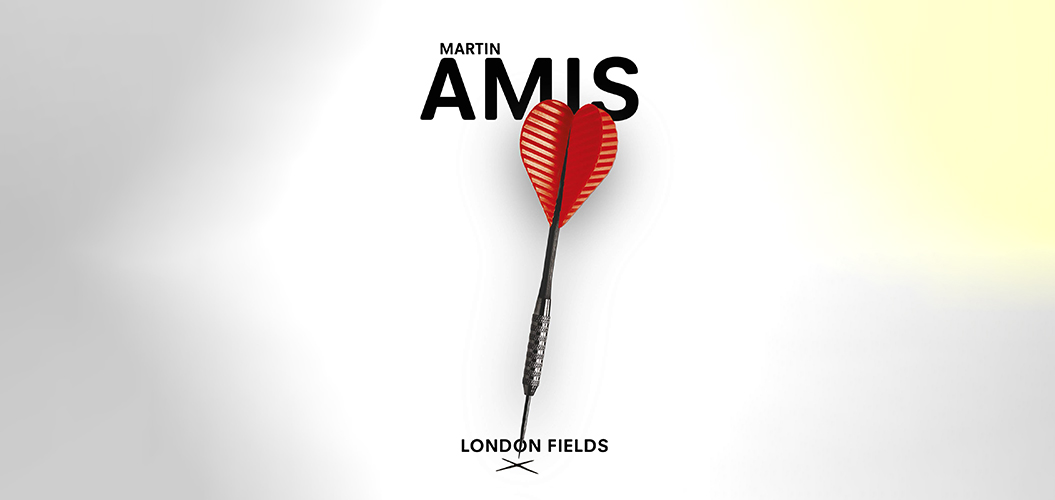London Fields
London Fields is Amis’ sixth novel and remains the most recognised of his work. The book took six years to complete, a long time by anyone’s standards. Originally conceived as a short novel, it would take Amis 470 pages to complete. At the end of it all he had created a masterful piece of writing that is recognised as an outstanding example of modern literature and remains as vibrant and relevant today as when it was written.
The book was completed in 1989 but is set ten years after. Amis, a rabid opposer of nuclear weapons, leaves a ten-year gap to allow for something to go horribly wrong. In honesty, that is just about the entirety of its explanation in the book. As an educated guess, it would seem to have mainly damaged the economy and weather systems of the planet. While the reader is offered occasional reminders, this is relegated to a distant secondary theme. The use of a tragedy in this way successfully comments on a seemingly common human response. It is noticeable that people and our characters adapt to changes and revert to the same lives they had been living. Despite the tragedy being mentioned, it is difficult to notice any change or corrective measure in the differing lives of our characters.
Let’s begin with our protagonist, Samson Young. As with a number of Amis’ other characters, he is a writer. Sam has come to stay in London because it has a better climate. He has serious health issues, quite possibly from exposure to radiation. He is also lacking in success and ideas. Again, a possible change in his environment is hoped to bring inspiration. Upon settling into London, he begins to frequent a pub called The Black Cross, a suitable venue of ill repute. As time passes, he meets the three people who will act as the inspiration he has been looking for.
The first character, Keith Talent, is one of the great victories of the novel. He represents the lower classes and everything, from his dialect to his great passion for darts, serves to create the very epitome of the stereotype. Keith is an utter failure in life: no job and no prospects, his self-esteem balanced on his darts game and a string of infidelities without a passing thought to the mother of his child. Keith is trapped by his circumstances, but often his reaction to this frustration can be monstrous.
The second acquaintance is Guy Clinch, a man who also seems trapped by the mundanity of his existence, but who is certainly on the other side of society. Guy is also imminently recognizable. Born into the wealthy classes, he attended the right schools (despite no real sign of a functioning intellect) and married appropriately. Unfortunately, the offspring is quite clearly one of the most atrocious children to ever draw breath and has taken over the house (pretty good going for an 18-month-old). Guy leads an existence that is a mainstay of modern storytelling, the combination of an unrewarding familial home and a desperate lack of purpose.
The third character is Nicola Six and she is distinctly different from the others. Nicola has had repeated dreams and visions about her death. She knows it will occur on her birthday, she knows the location and the method. The one thing she does not know is who her murderer will be. Nicola was not created with the same intricacy as the other characters. Amis has been criticised for creating plastic women in other works, although in London Fields it is both understandable and justifiable. The holes in her character are defined by the holes in her life; she is a fragment of human existence. She is also wildly promiscuous and a highly adept temptress.
It becomes evident to Sam that he has found more than inspiration − he has found a whole story waiting to unfold. He has a victim, a murderer and a foil all perfectly aligned. He recognises that he does not have a whodunnit, but more of a “whydoit”, and that he is in the position to give the odd nudge in the right direction. Thereafter, he simply has to transcribe the events without the slightest concern about writer’s block.
Amis purposefully creates the very definition of stereotypical characters that breathe life through his prose and well-strung satire. The locations of a seedy dive, a single room flat, and a Victorian house are written with the same eloquence and wit, adding a consistent and recognisable backdrop. While many writers attempt to avoid stereotypes (with varying success) Amis’ approach is to embrace them wholeheartedly and perfect them within the narrative. The characters may begin as archetypes, but quickly outgrow that definition.
While Amis is perfectly comfortable creating identifiable characters and places, equally with the simple premise of a murder mystery all being exposed early in the novel it is a ruse, a trap for the reader to fall into. However, predictable Sam and the reader believe the outcome to be, it soon becomes clear that this is not the case. The story has the complexity and precision of a spiderweb − but who will be the spider, and who will be the fly?

